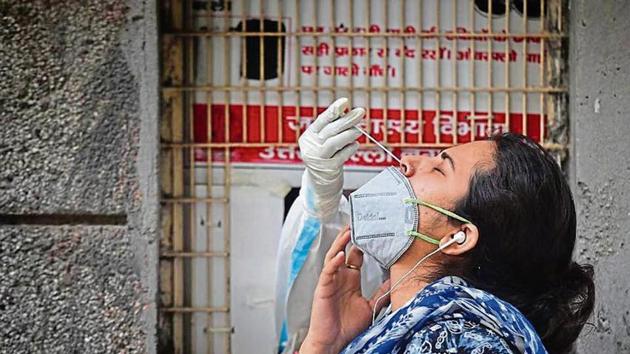Covid-19: What you need to know today
Uttarakhand, at least the part I went to, wasn’t crowded. The state insists that all inbound tourists register themselves, and there was a check at the point of entry to ensure this.
I skipped four instalments of this column because I decided to take a short break — part birding trip, part R&R, but all safe, masked, and socially distanced. It involved driving through rural and semi-urban Uttar Pradesh, where no one appears to be wearing masks (and there is no social distancing), and Uttarakhand, where most people sport them, and there is some adherence to social distancing norms.

That India’s largest state has managed to keep its Covid-19 numbers where they are (470,270 cases till the evening of October 25; 6,882 deaths; a mere 2,032 cases on October 25 itself; and only 27,317 active cases) despite a dependence on rapid antigen tests (which are unreliable) and lax enforcement of both mask discipline and social distancing is truly impressive — and also surprising.
Uttarakhand, at least the part I went to, wasn’t crowded. The state insists that all inbound tourists register themselves, and there was a check at the point of entry to ensure this. A test isn’t required, although I did take a reverse transcription polymerase chain reaction (RT-PCR) one a few days before I travelled (it was negative). According to the HT dashboard (which is also the source of the Uttar Pradesh numbers), Uttarakhand saw 221 cases on October 25, has seen 60,376 in all, and has had 993 deaths. That means it has fewer than 5,000 active cases.
To digress, it felt good to get out of Delhi after nearly eight months. I think, when this is all over (which must be one of the most commonly used phrases these days), it will take me some time to get used to not wearing masks; it felt strange to walk even on jungle trails without a mask despite there being no one else around.
The sense of normalcy in both Uttar Pradesh and Uttarakhand isn’t surprising given their current caseloads. India itself has just around 650,000 active cases at this point. And on Sunday, India registered a mere 46,011 cases, half the number of cases it was registering per day in the third week of September. The last time it registered such numbers was in late July. As Dispatch 176 on October 7 first pointed out, the first wave of the coronavirus disease in India is over. It lasted roughly seven months.
There’s no telling how long the lull will last, and how low the daily case numbers could go. Yet, based on what’s happening in Europe — Dispatch 155, on September 11, referred to the emergence of the second wave in Europe that is now raging through that continent — and the US (the same column mentioned the likelihood of a third wave in the US), the respite will likely be temporary. And based on the trajectory of the second and third waves in the US and the second in Europe, there is a high probability that the intensity of the second wave in India will be stronger than the first. The second wave in Europe is following the same trend seen in the second wave in the US: it is leading to fewer deaths, and it will be interesting to see if the number of deaths in the ongoing third wave in the US is lower even than that seen in the second. Still, lower deaths haven’t meant fewer hospitalisations. Hospitals in many European countries have been overwhelmed by the sheer number of people needing treatment for Covid-19, and the same thing is beginning to happen in several US states.
Part of the reason for the higher intensity of subsequent waves of the coronavirus disease is obvious — they coincide with progressive easing of restrictions on movement and activities, often encouraging people, usually the young, to indulge in irresponsible behaviour. In many European countries, the median age of people infected in the second wave is lower than that in the first.
The result isn’t just a spike in infection numbers but severe illnesses, and may be even deaths in vulnerable populations. Research by Paraic Kenny of the Gundersen Medical Foundation, Wisconsin, and others, published on pre-print server medRxiv and reported in Nature, shows a strong correlation between the reopening of in-person education in colleges in one of the state’s counties and an increase in coronavirus disease infections, with one of the strains (the researchers carried out a genomic investigation) spreading to old-age homes where it infected eight and killed two.
That is what countries, including India, have to guard against.






